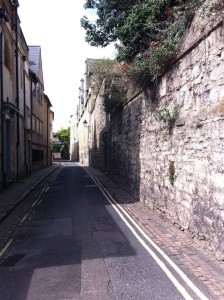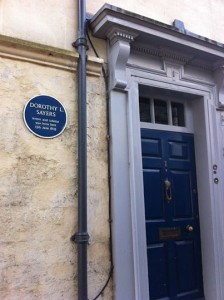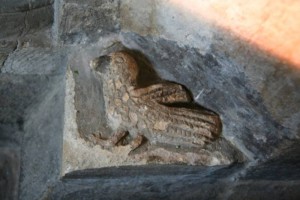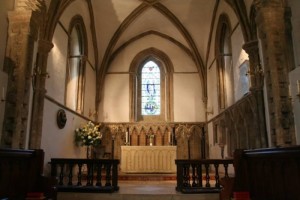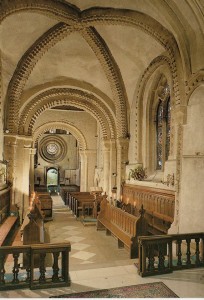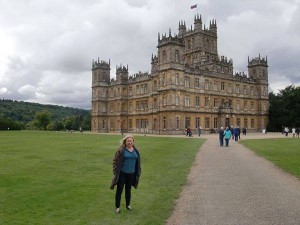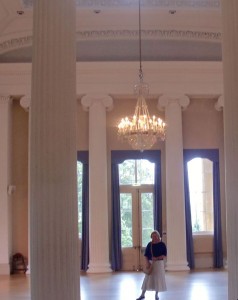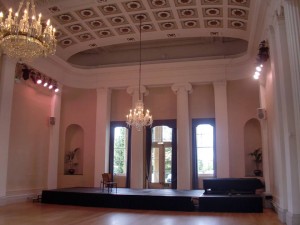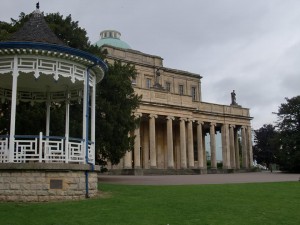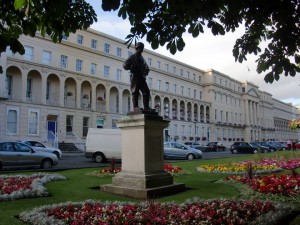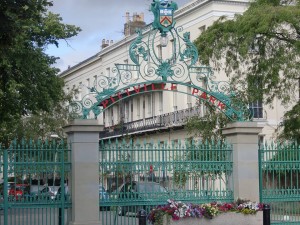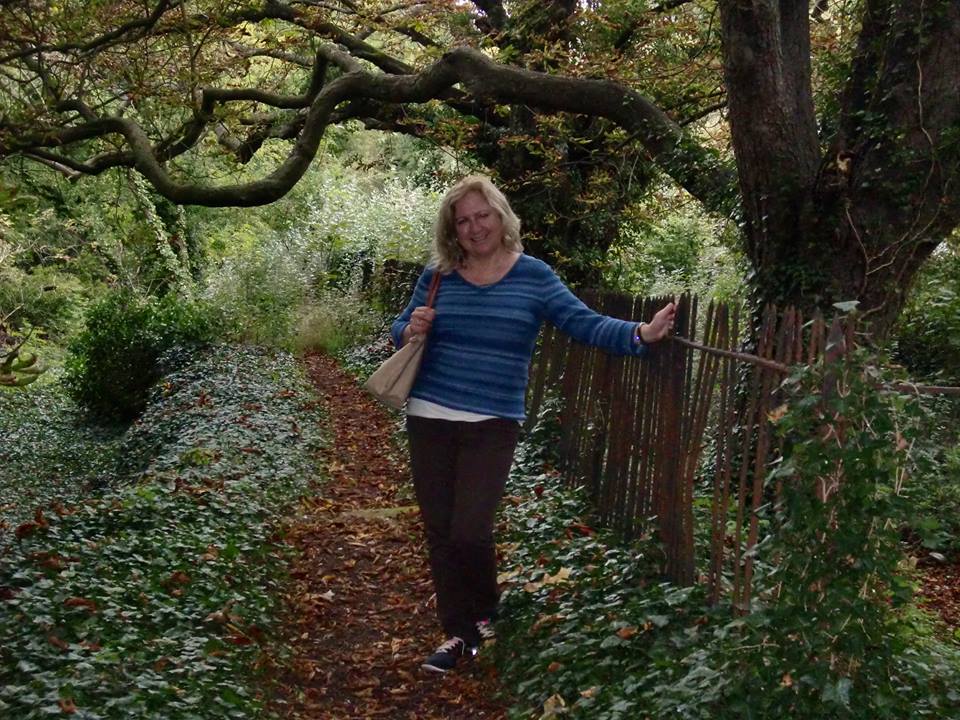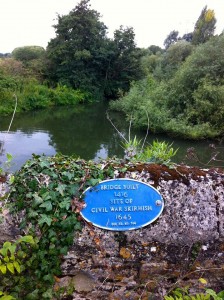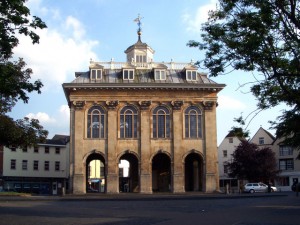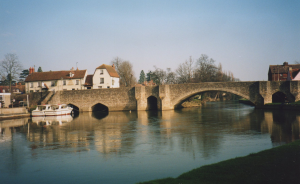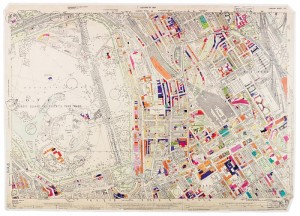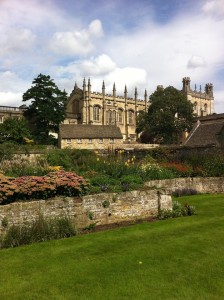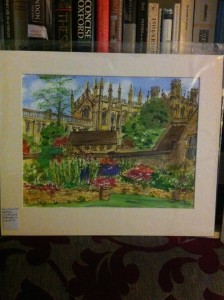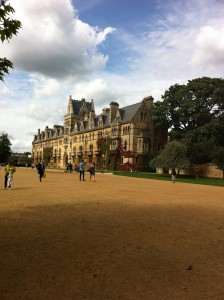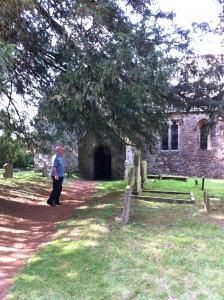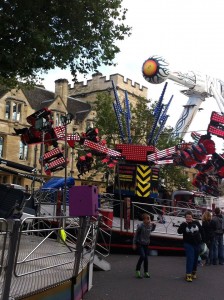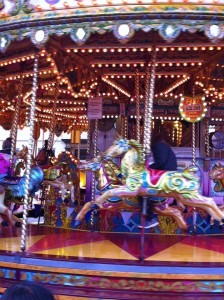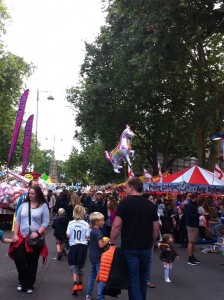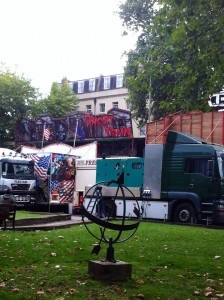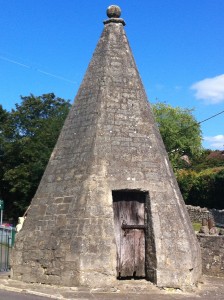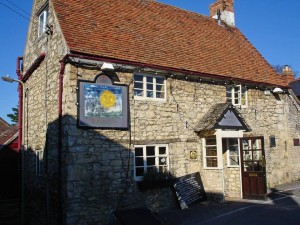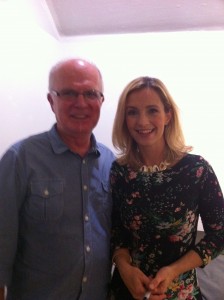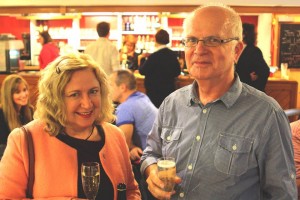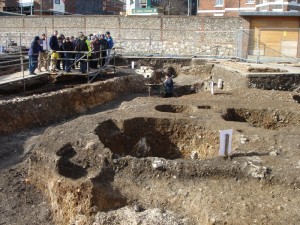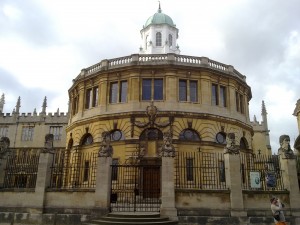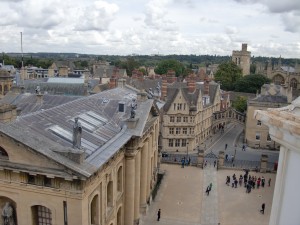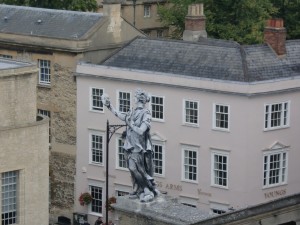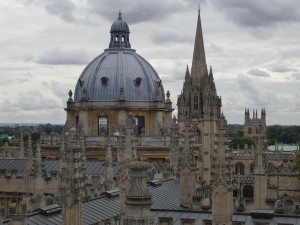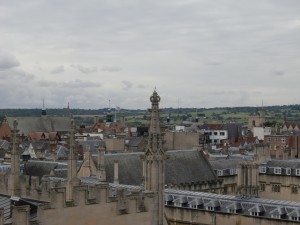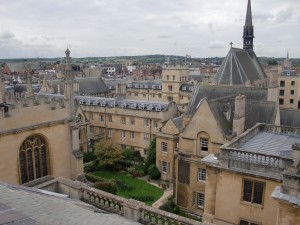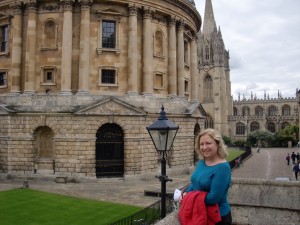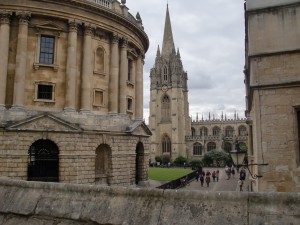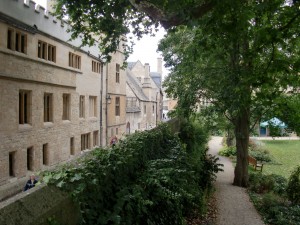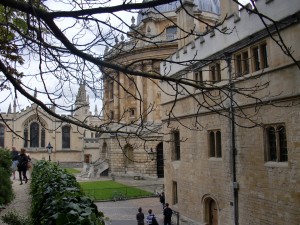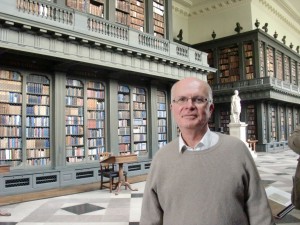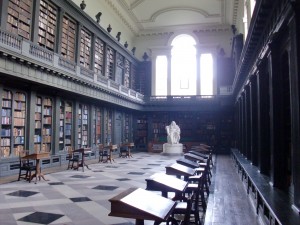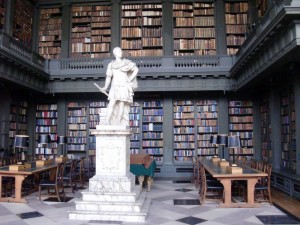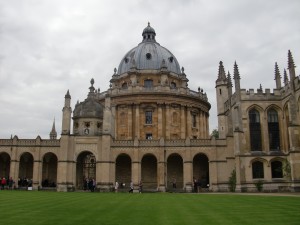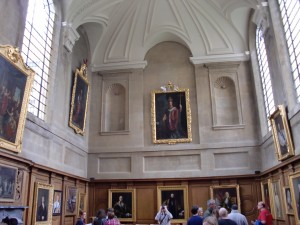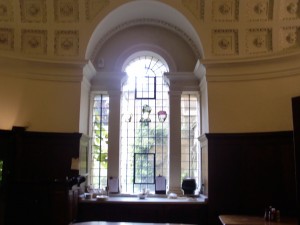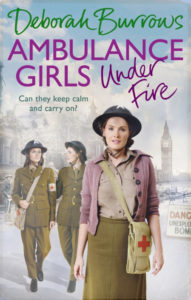I’m at 65,000 words in my new book and in my mind I’ve just emerged from the nightly shelter of the Underground as the raiders roar overhead.
So I’m ready for a break. So I thought I’d take take the time to write a new post.
Oxford is lovely at any time, and this video certainly captures some of the magic:
It’s full of surprises, too. We were wandering back from the library the other day down Brewer Street, towards St Aldates so we could walk home along the river, when we discovered the birthplace of one of my favourite authors, Dorothy L Sayers:
The new university year starts at the end of the month, so Oxford is being ‘Michaelmas cleaned’ in preparation. One of my favourite streets is Holywell Street:
On 2 September Toby and I were good Iffley parishioners and headed off to the village church for census duty. St Mary’s is late 12th Century and one of the gems of Oxfordshire. But it needs essential work and the Church Council must be in a position to show how many people visit in order to get funding. So Toby and I volunteered to sit there for 3 1/2 hours and take down details of the visitors. It was a surprisingly enjoyable afternoon. We had seven visitors and I took the opportunity to point out to them my favourite bits, but there was also a lot of time to really examine the old church and get to know it well. I’ve put up photos before of the outside before, but here are some photos of the gorgeous interior.
On 4 September we took the chance to visit Downton Abbey (er, I mean, Highclere Castle). It was a really lovely stately home, and the Egyptian exhibition in the basement was an added bonus.
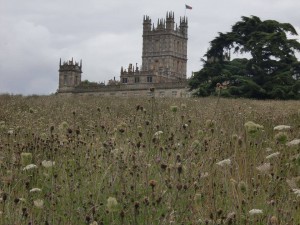
Toby braved the possibility of hay fever to take a photo of the Castle from its marvellous wildflower meadow.
On the way back we we saw this memorial window for John Betjeman in Faringdon church.
Last year Toby and I went to the Celebration of British Craftsmanship and Design in the Thirlestane Long Gallery, Cheltenham and Toby bought me a gorgeous wooden jewellery box. So this yearI had a special invitation to attend the opening. We went early and had a look around Cheltenham Spa, including the nineteenth century Pump Room and the town centre. The Pump Room is where people ‘took the cure’ (the pump is still there and, believe me, the water tastes foul).
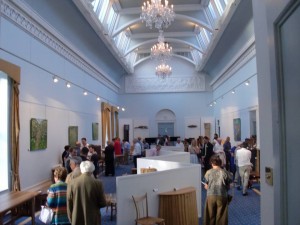
As you may know, Toby’s EU grant is to consider the collection of Sir Thomas Phillipps, a 19C bibliophile. Phillipps’ former home, Thirlestane, is now part of Cheltenham College (a rather posh public school that opened in 1841) and it is where the ‘celebration’ was held.

I fell in love with a glass pot, decorated with silver leaf, and had to buy it – it’s the second on the left in the picture.
Last week, we set out for a walk along the river and into the fields around the ancient town of Abingden. The route was about 3 1/2 miles, and we fitted it in from about 5.00pm until we emerged at Abingdon for dinner in an old pub. I particularly loved the walk along the ancient, now disused, road (I love how history sneaks up on you in England). Abingdon became the county town of Berkshire sometime after receiving its Royal Charter in 1556. Abingdon’s failure to engage fully with the railway revolution, by accepting only a branch line, sidelined the town in favour of Reading which became the County Town in 1869 and in 1974 it lost its connection to Berkshire completely, as it became part of Oxfordshire after the counties were all changed. Now it’s a lovely, unspoiled town to visit – except for the appalling traffic congestion.
This is my latest acquisition – a very big book of reproductions of the bomb maps of London. Plus a magnifying glass with a LED light in it so I can see every street and every bombed building.
The book is reviewed by The Guardian here:
http://www.theguardian.com/cities/gallery/2015/sep/02/hand-coloured-bomb-damage-maps-london-in-pictures
As I trace my heroine’s journeys through the bombed city it’s as if I’ve fallen into London in the Blitz. I feel like the children in CS Lewis’ Voyage of the Dawn Treader, who fell headlong into the painting and ended up in Narnia…
Another acquisition is a watercolour of the peace garden in Christchurch. We walked home through there the other day:
We also finally visited the Treacle Well in of ‘Alice in Wonderland’, which in reality is the holy well of St Margaret at St Margaret’s Church in Binsey. Alas, the water level was too low, so that even if we lay down and stretched out our hands to the (rather green and algaeish water) we couldn’t reach.
St Margaret’s Church at one time used to be a part of the Priory of St Fridewide. The story of the well is delightful:
Frideswide was a Saxon princess, the daughter of Didanus and his wife Safrida; she was born around 650AD. Frideswide took holy orders as a nun and made her vows of celibacy. Nonetheless, she was pursued by King Agar of Mercia. Frideswide rejected his unwanted advances and ran away, hiding herself in the woods. Agar did not take kindly to this, and brought an army to Oxford to claim her by means of force. But Agar was struck blind before he was able to catch her.
Frideswide heard about the blindness and took pity on Agar, praying fervently that his sight should be restored. She prayed especially to St Margaret of Antioch, who had lived during the time that the Romans were persecuting the Christians. LIke Frideswide, Margaret chose to flee rather than accept the advances of an unwelcome admirer. He denounced Margaret as a Christian and she was arrested, tried, found guilty and beheaded.
During one of her prayers to St Margaret, Frideswide heard a voice from the heavens telling her to strike the ground nearby with her staff. She followed the instructions and when she did so the earth opened up to reveal a small well. Frideswide took some of the water from the well, and when she bathed Agar’s eyes in the fluid, his sight was miraculously restored. To mark the miracle Frideswide established her priory next to the well and dedicated the chapel to St Margaret of Antioch.
To more secular pleasures: the St Giles Fair was held in Oxford last week. St Giles is a wide road in central Oxford, and it was blocked to traffic for the fair’s two-day duration. This resulted in traffic chaos, such as Toby and I waiting 45 minutes for the Number 3 bus to Iffley.
Since the 19th century, the fair has been held on the Monday and Tuesday following the first Sunday after St Giles’ Day (1 September), but it is of much earlier origins. It relates to St Giles Church, which was finished in 1120, but not consecrated until 1200. As part of the commemoration of the consecration, St Giles’ Fair was established and has continued for the last 815 years, nowadays as a funfair.
Queen Elizabeth I stayed in Oxford between 3–10 September 1567 and watched the fair from the windows of St John’s College on the east side of St Giles.
We try to take advantage of any sunshine to go for a walk. A couple of Saturdays ago it was a glorious sunny dayand we went walking in the countryside south of Oxford.
And Toby likes to attend any Irish music concerts he can. We drove to Banbury to attend a wonderful concert by Cara Dillon and her husband Sam Lakeman at the Mill Art Centre. Afterwards, Toby had a photo with the pretty singer – no I am not jealous… And he bought every one of her cds – every one!!
This song was a highlight:
We even got onto the Mill’s Facebook page:
And in between all of that we flew to Philadelphia! Toby had a workshop to attend and we met up with old friends at the UPenn campus. The Pope is due to visit there soon, and we saw this tasteful exhibition of Papal souvenirs at the airport:
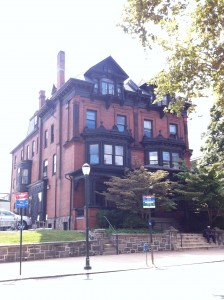
Philadelphia is where Addams, creator of the Addams Family hailed from – and Addams family-type houses abounded,
And, finally, last weekend was the Open Oxford – when many colleges and secret Oxford haunts were open for visitors. We looked over the archaelogical excavations at the site of the now demolished monstrosity that was the Westgate Car Park. In the 14th Century it was owned by the Greyfriars, who had a huge church and Monastery and college that attracted students from all over Europe.
We also climbed the cupola at the top of the Sheldonian, for wonderful views of the Dreaming Spires. The theatre was built from 1664 to 1669 after a design by Christopher Wren. I graduated there. In a tradition that goes back to the second half of the 12th century, students attending graduation wear full academic dress, including a mortar board and sub fusc. But perhaps the most unusual aspect is that the proceedings are still read entirely in Latin!
And we visited Exeter College (much beloved by TV shows such as Morse and Lewis) to see the Fellows Garden and its views of Radcliffe Square:
But the piece de resistance was visiting All Souls College, especially the Codrington Library and the Hall. From Wiki:
“The library in its current form was endowed byChristopher Codrington (1668–1710), a Fellow of the college who amassed his fortune through plantation slavery. Codrington bequeathed books worth £6,000, in addition to £10,000 in currency (the equivalent of approximately £1.2 million in modern terms). The library, designed by Nicholas Hawksmoor, was completed in 1751 and has been in continuous use by scholars since then.
The modern collection comprises some 185,000 items, about a third of which were produced before 1800. The library’s collections are particularly strong in Law, European History, Ecclesiastical History, Military History, and Classics. There is an expanding collection devoted to sociological topics and the History of Science. Unusually for an Oxford college library, access to the Codrington is open to all members of the University (subject to registration). The library contains a significant collection of manuscripts and early printed books, and attracts scholars from around the world.”

